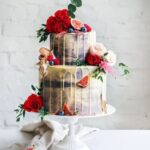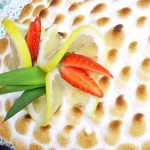Cake decorating is a popular hobby and profession that allows individuals to express their creativity through edible art. Many people wonder, “Is cake decorating hard?” In this article, we will explore the basics of cake decorating, different techniques and styles, debunk common misconceptions, discuss essential tools and equipment, provide expert tips for mastering the craft, guide beginners through the process step by step, offer solutions for overcoming challenges, and ultimately show how cake decorating can be made easy.
Understanding the basics of cake decorating is essential for anyone looking to delve into this fascinating world. From choosing the right type of frosting to mastering piping techniques, there are various elements that contribute to creating a beautifully decorated cake. Whether you’re a beginner or someone looking to refine their skills, having a solid understanding of the fundamentals is crucial.
As we delve into this article, we will explore the intricate art of cake decorating – from classic techniques to modern styles that have evolved over time. By understanding the different methods and approaches used in cake decorating, individuals can begin to appreciate the breadth and depth of possibilities when it comes to creating stunning confections. So, is cake decorating hard? Let’s find out as we uncover the truths behind this beloved culinary art form.
The Art of Cake Decorating
Cake decorating is an art form that allows for endless creativity and expression. There are numerous techniques and styles that can be used to create stunning and delicious works of edible art. Whether you are a beginner or seasoned baker, exploring the different methods of cake decorating can open up a world of possibilities.
Techniques and styles in cake decorating:
- Buttercream piping: Using a variety of piping tips to create intricate designs with buttercream frosting.
- Fondant sculpting: Molding and shaping fondant to create 3D decorations such as flowers, figures, and other designs.
- Royal icing flooding: Creating a smooth, glossy surface by flooding cookies or cakes with royal icing.
- Airbrushing: Adding color and dimension to cakes using an airbrush machine for a professional finish.
- Stencil work: Using stencils to add intricate patterns and designs to cakes with buttercream or powdered sugar.
Mastering these techniques takes time, practice, and patience. While it may seem daunting at first, with dedication and the right guidance, cake decorating can be a rewarding and enjoyable skill to develop. Experimenting with different styles and techniques can help expand your abilities and grow your confidence as a decorator.
It’s important to remember that every cake decorator has their own unique style and preferences when it comes to techniques. Some may gravitate towards detailed piping work while others prefer the sculptural aspect of fondant decorating. The key is to find what resonates with you and embrace the journey of learning and perfecting your craft.
Common Misconceptions About Cake Decorating
When it comes to the world of cake decorating, there are many misconceptions that can deter beginners from trying their hand at this creative art form. One common misconception is that cake decorating is incredibly difficult and requires natural artistic talent. However, the truth is that with the right tools, techniques, and guidance, anyone can learn to decorate a beautiful cake.
Another myth about cake decorating is that it requires expensive and specialized equipment. While there are certainly a wide range of tools and supplies available for professional cake decorators, beginners can start with just a few basic items such as piping bags, tips, offset spatulas, and a turntable. As you become more experienced and confident in your skills, you can gradually invest in more advanced equipment.
Furthermore, some people believe that cake decorating is extremely time-consuming and labor-intensive. While it’s true that certain intricate designs may take time to perfect, there are plenty of simple yet stunning decorating techniques that can be quickly mastered with practice. With the right mindset and dedication, mastering the art of cake decorating is well within reach for anyone who is willing to put in the effort.
Tools and Equipment Needed for Cake Decorating
Cake decorating requires a specific set of tools and equipment to achieve the desired results. As a beginner, it is important to invest in the essential supplies that will enable you to practice and improve your skills. One of the most basic tools is an offset spatula, which is used for spreading icing and smoothing surfaces. Piping bags and tips are also crucial for creating various designs and decorations on the cake.
Another essential piece of equipment is a turntable, which allows for easier and more precise icing application. This rotating platform gives decorators better control over their movements, resulting in smoother finishes. Additionally, a good quality cake stand or board is necessary to display and transport finished creations without causing damage.
| Tool/Equipment | Function |
|---|---|
| Offset spatula | Spreading icing and smoothing surfaces |
| Piping bags and tips | Creating various designs and decorations on the cake |
| Turntable | Easier and more precise icing application |
| Cake stand/board | Displaying and transporting finished creations without damage |
Investing in these basic tools will set you up for success as you embark on your cake decorating journey. Having the right equipment not only makes the process easier but also allows you to explore different techniques with confidence. As you progress, you can expand your collection based on your specific needs and preferences.
Tips for Mastering Cake Decorating
Understanding Different Techniques and Styles
When it comes to mastering cake decorating, it is important to understand the different techniques and styles that can be utilized. From piping and frosting to fondant and gum paste work, there are various methods that can be employed to achieve different effects. By familiarizing yourself with these techniques, you can expand your skill set and create a wider range of designs.
Practice Makes Perfect
One of the most important pieces of advice for mastering cake decorating is to practice regularly. Like any other form of art, honing your skills takes time and effort. Set aside time each week to work on your cake decorating projects and don’t be afraid to experiment with new designs and techniques. The more you practice, the more confident you will become in your abilities.
Seeking Guidance From Experienced Decorators
Don’t hesitate to seek advice from experienced cake decorators who can provide valuable tips and insights. Whether it’s attending workshops, watching tutorials online, or joining forums and communities dedicated to cake decorating, learning from others in the field can significantly accelerate your progress. Networking with other decorators also provides opportunities for collaboration and mentorship, which can further enhance your skills in cake decorating.
By following these expert tips for mastering cake decorating, you can improve your abilities and confidence in this artistic craft. With dedication, practice, and a willingness to learn from others, you can elevate your cake decorating skills to new heights.
Step-by-Step Guide to Cake Decorating
Cake decorating may seem like a daunting task, but with the right guidance and knowledge, it can be an enjoyable and fulfilling experience. In this section, we will break down the process of cake decorating into manageable steps, offering a comprehensive guide for beginners to follow.
Gathering Your Supplies
Before you begin cake decorating, it is important to gather all the necessary tools and equipment. This includes icing bags, piping tips, offset spatulas, fondant smoothers, and a turntable. Additionally, having a good quality cake stand or cardboard round is essential for presenting and transporting your finished creation.
Preparing Your Cake
The first step in cake decorating is preparing your cake for the design process. This involves leveling the layers of your cake to ensure an even surface for decorating. You can use a serrated knife or a cake leveler for this task. Once your cake is level, it’s time to apply a crumb coat – a thin layer of frosting that seals in any loose crumbs. This will create a smooth base for your final decorations.
Applying Decorations
After the crumb coat has set, you can start applying your chosen decorations. Whether you are using buttercream frosting, fondant, royal icing, or other edible decorations, take your time and work methodically to achieve the desired result. Use piping bags and different tips to create intricate designs or shapes on your cake. If using fondant, roll it out on a clean surface and carefully drape it over the cake, smoothing out any wrinkles as you go.
By breaking down the process of cake decorating into these manageable steps, beginners can approach the art with confidence and ease. With practice and patience, anyone can master the techniques involved in creating beautifully decorated cakes that are sure to impress friends and family alike.
Overcoming Challenges in Cake Decorating
When it comes to cake decorating, many people may wonder, “Is cake decorating hard?” The truth is that while it may seem intimidating at first, with the right knowledge and practice, it can be an enjoyable and rewarding experience. In this section, we will delve into some of the common challenges that decorators face and how to overcome them.
One of the most common difficulties in cake decorating is working with fondant. Fondant can be tricky to handle, often leading to tears or cracks on the surface of the cake. To troubleshoot this issue, it is important to ensure that your fondant is at the right temperature and consistency before rolling it out. Additionally, using a smoother tool can help eliminate air bubbles and create a seamless finish.
Another challenge for decorators is achieving smooth buttercream icing. Uneven or lumpy buttercream can detract from the overall appearance of the cake. To address this issue, making sure that your cake layers are level and applying a crumb coat before adding the final layer of buttercream can make a significant difference in achieving a flawless finish.
Additionally, dealing with intricate designs and details can also be challenging for those new to cake decorating. This may include piping delicate patterns or creating elaborate sugar flowers. Patience and practice are key when mastering these techniques, as well as investing in quality piping tips and tools.
Overall, while there are certainly challenges in cake decorating, with dedication and perseverance it is possible to overcome them. By understanding how to troubleshoot common issues such as fondant tears or uneven buttercream, decorators can build their skills and confidence in creating beautifully decorated cakes.
| Common Challenges | Troubleshooting Tips |
|---|---|
| Fondant tears/cracks | Ensure proper temperature/consistency; use a smoother tool |
| Uneven/lumpy buttercream | Level cake layers; apply crumb coat before final layer |
| Intricate designs/details | Practice patience; invest in quality tools |
Cake Decorating Made Easy
Cake decorating is a creative and rewarding skill that can be mastered with patience and practice. While it may seem intimidating at first, with the right guidance and tools, anyone can become proficient at cake decorating. In this section, we will explore some strategies for simplifying the process and boosting confidence for beginners.
One of the most important aspects of making cake decorating more manageable is to start with the basics. Learning fundamental techniques such as icing consistency, piping, and simple design elements is crucial for building a strong foundation. By mastering these core skills, beginners can gradually progress to more complex decorations with greater ease.
Another helpful tip for simplifying cake decorating is to invest in quality tools and equipment. Having the right supplies, such as piping bags, tips, spatulas, and a turntable, can make a significant difference in the finished product. Additionally, utilizing pre-made decorations or edible embellishments can save time and effort while still creating stunning designs.
Lastly, seeking out tutorials and resources from experienced cake decorators can provide invaluable insight and inspiration for those new to the craft. Watching instructional videos, taking classes, or joining online communities can offer support and encouragement for beginners as they navigate the challenges of cake decorating. With dedication and perseverance, even novice decorators can gain confidence in their abilities and create beautiful confections that showcase their unique style.
As we continue to demystify cake decorating by breaking down complex techniques into manageable steps, beginners will find themselves empowered to tackle any challenge that comes their way in this rewarding art form.
Conclusion
In conclusion, cake decorating is indeed a skill that requires patience, practice, and creativity. While it may seem daunting at first, with the right techniques and tools, anyone can master the art of cake decorating. It is important to remember that even experienced bakers were once beginners, and their skills developed over time through trial and error. The key is to not be discouraged by initial challenges but instead to embrace them as learning opportunities.
The rewarding experience of cake decorating comes from the joy of creating something beautiful and delicious from scratch. Whether it’s a simple birthday cake or an elaborate wedding masterpiece, the satisfaction of seeing the end result is unparalleled. Additionally, there are endless possibilities in cake decorating – from traditional buttercream designs to modern fondant creations, the only limit is your imagination.
Ultimately, while there may be moments of frustration and difficulty along the way, the sense of accomplishment that comes with mastering cake decorating is well worth the effort. With dedication and perseverance, anyone can become proficient in this art form and create stunning confections that will leave a lasting impression on those who enjoy them. So if you’ve ever wondered “Is cake decorating hard?” know that with passion and practice, it can become an immensely rewarding skill to have.

Welcome to my blog about home and family. This blog is a place where I will share my thoughts, ideas, and experiences related to these important topics. I am a stay-at-home mom with two young children. I hope you enjoy reading it! and may find some helpful tips and ideas that will make your home and family life even better!





